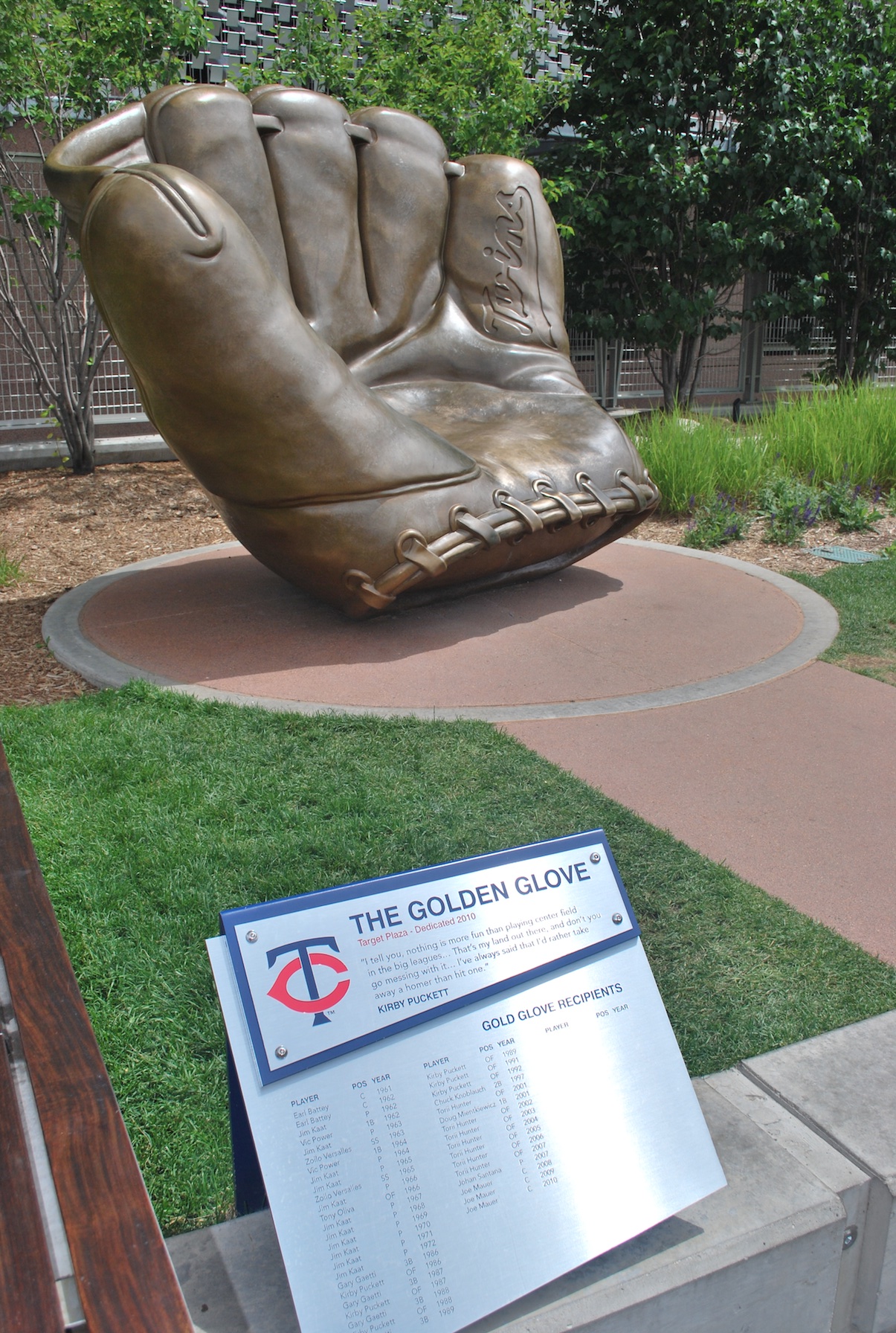Target Field is the most urban MLB ballpark in the United States. It was the third home of the Minnesota Twins after they relocated to Minneapolis in 1961 and sixth overall ever since the team was formed in Washington, D. C. in 1901. The design and construction of Target Field were one of the most challenging projects that called for immense planning and innovation to enhance its urban appeal and ensure an outstanding baseball stadium experience for fans.
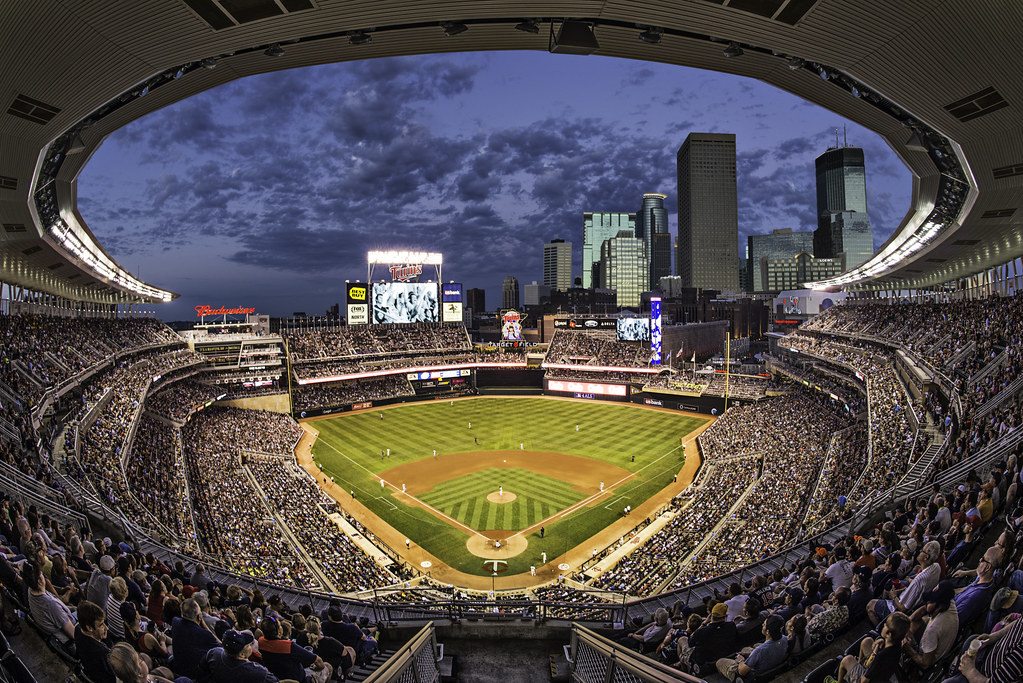
The History
The Washington Senators moved to Minneapolis and rechristened themselves as Minnesota Twins when the 1961 season began. For the next 21 years, the team played at Metropolitan Stadium, which was also the home base of the NFL franchise Minnesota Vikings. However, the limitations and expenses forced both the Twins and Vikings to scout for a new stadium. In 1982, the Twins inaugurated the Hubert H. Humphrey Metrodome as its new home and continued to play there until 2009.
In 1994, Minnesota Twins owner Carl Pohlad sought to build a new stadium claiming that the Metrodome had become economically obsolete following the financial necessities of MLB. This set the stage for a 16-year struggle to find a new home for Twins that ended in 2010 with the opening of Target Field. Twice in 1994 and 1997, the plan for a retractable-roof stadium didn’t get approvals and a referendum put state spending restrictions on sports facilities. Frustrated at the denial of a new ballpark plan, the Twins contemplated to move to North Carolina and build a new stadium at Greensboro in 1998. However, a referendum there rejected their proposal. In 1999, another referendum for a new baseball stadium in St. Paul, MN, failed despite backing from its mayor.
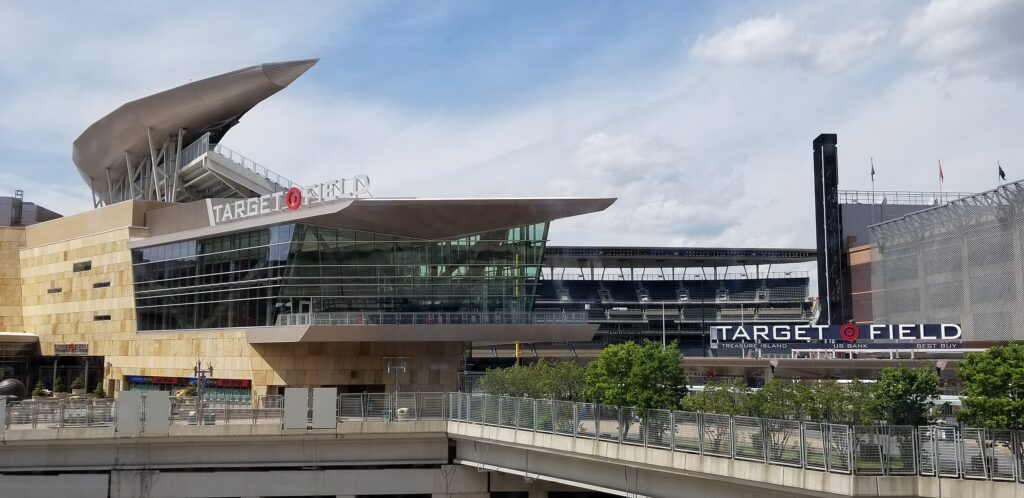
In early 2000, a group of businessmen and investors came together to offer the Rapid Park adjacent to downtown Minneapolis to build a new baseball stadium for the Twins. Known as Minnesota Urban Ballpark and MN Twinsville, they played a key role in getting approval for Target Field. The land they collectively owned was a parking lot and a part of the historic Warehouse District. Their lobbying led to the city forming a citizen panel while the Minnesota Twins created Minnesotans for Major League Baseball, an advisory group of 130 people to consider funding aspects.
In 2001, there were rumors that MLB had a contraction plan that might end the Twins’ participation. This created a public opinion favorable toward a new baseball stadium and the Hennepin County offered to build a new ballpark as a partner in 2002. Despite political powerplay and challenges, Minneapolis started the process to acquire the Rapid Park site in 2003. The Minnesota Twins and Hennepin County agreed on the funding in 2005 and the state legislature approved a new stadium plan in 2006. The county raised the sales tax by 0.15% to finance $392 million for the ballpark.
Despite disputes and controversies over the land value, the first brick for Target Field was laid on May 21, 2007.

Design and Features
The new baseball stadium was named Target Field in 2008 after the Minnesota Twins inked an agreement allowing Minneapolis-based Target Corporation to acquire naming rights for 25 years. The deal helped increase the seating capacity, add public art, decorate the top deck with canopies, build a plaza, and construct a pedestrian bridge connecting the stadium with downtown Minneapolis.
In January 2010, the staff moved into the new arena and Target Field saw the first game on April 12, 2010. The Twins beat the Boston Red Sox 5-2. Many consider the field as a modern reincarnation of Oriole Park at Camden Yards. The designer also drew inspiration from its previous designs, including PNC Park of the Pirates.
The design of Target Field is an interesting combination of urban elements and efforts to maximize the baseball experience. While sustainability and urban design continue to remain the hallmark of the ballpark, it uses spatial connection both inside and outside. There are also a heated field and heated decks. This allows more than 8,000 visitors to roam around the stadium at any time during a game day while enjoying the game without any obstruction.
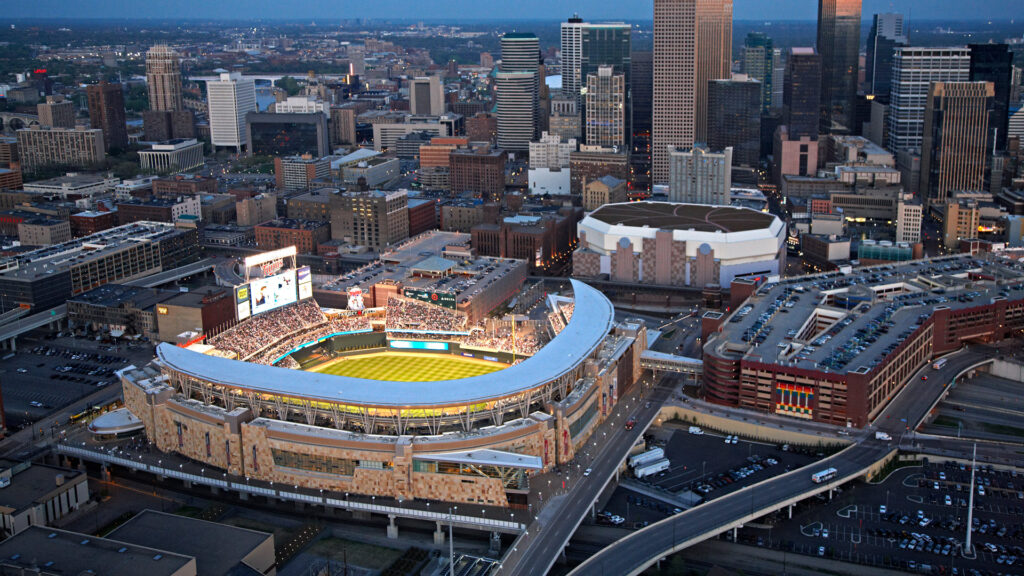
Target Field has the same dimensions and seating capacity as Fenway Park. However, extensive use of local limestone makes it distinct among all MLB ballparks. The baseball stadium is also the second after Oracle Park of San Francisco to have LEED Silver Certification and the first to get LEED Gold in 2017.
To enhance fan experience and comfort, Target Field underwent a $23 million upgrade in 2008. The Twins added the largest canopy soffit and also the fourth-biggest scoreboard in MLB. Warming shelters were set up to protect fans from extreme cold weather. The 2011 season saw the inauguration of the illuminated Twins Tower, and free Wi-Fi, more concession facilities.
Facilities
Tiger Field boasts the only bonfire among all MLB venues. Located left-field Budweiser roof deck, the bonfire is surrounding by an ample standing place to enjoy the game. There are also warming rooms offering succor to fans from the punishing Minnesota winter during game evenings. Double-decker bullpens are another new feature at the Minneapolis baseball stadium. There is also a public plaza, green space, and an amphitheater.

Target Plaza is the center of all public spaces at Target Field. Adjacent to Gate 34, it hosts bronze statues of former greats of the Minnesota Twins and a giant wave veil that emits lights as flutters with the wind. A large “Golden Glove” about 160 meters from home plate commemorates all home team members who won the Gold Glove Award. It is an important photo-up place for visitors to the ballpark.
The home plate we see today at Target Field was originally at the Metrodome until 2009. After the last game there, it was dug up and relocated to the new baseball stadium. Similarly, the Stars and Stripes flag pole at Target Field was from Metropolitan Stadium. There are smaller poles on the left upper rim hosting flags of each division, league, and championship the Minnesota Twins have played. The flags on the right upper rim represent all MLB teams.
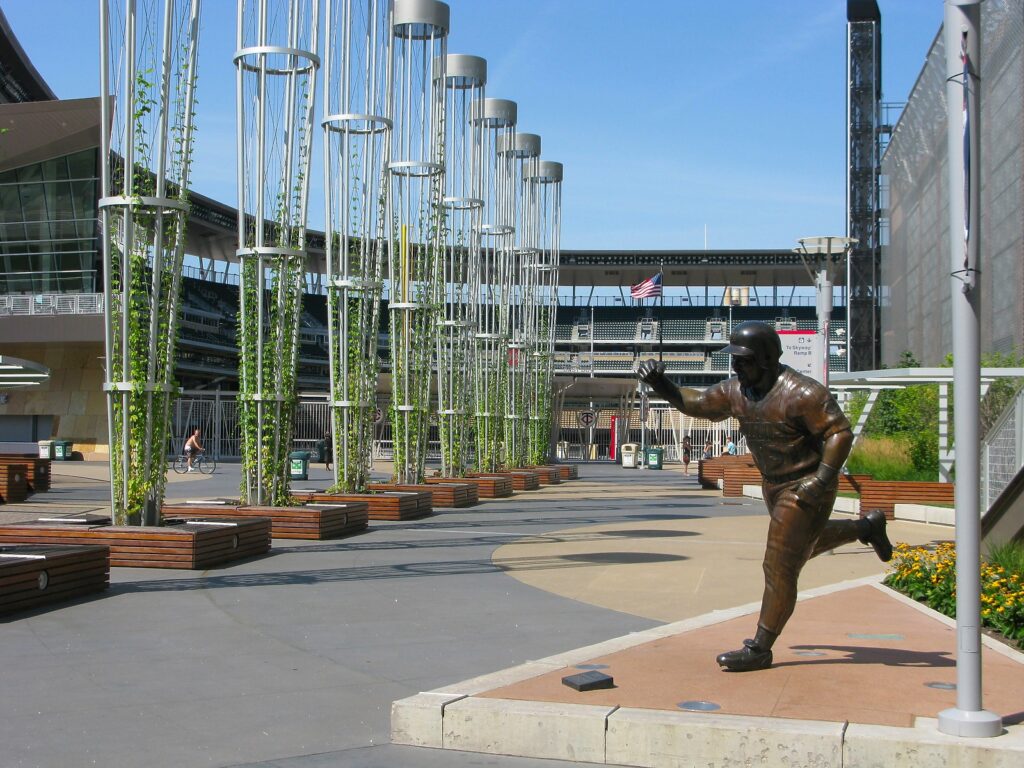
The Town Ball Tavern is the place to feast on Jucy Lucy burgers at Target Field. The upper concourse bar has the famed wooden flooring from Minneapolis Armory basketball stadium, where the Los Angeles Lakers played until 1960. Close to the home plate at the upper concourse, there are Two Gingers Pubs. While one bar hosts game-day performances by organist Sue Nelson, the other is the place to sip a drink while watching ongoing games.
Hrbek bar and pub on the main concourse adjacent to the home plate at Target Field is a tribute to Kent Hrbek, who played with the Twins as its first baseman for 14 years. Bat & Barrel restaurant offers a range of delectable items on the menu while the State Fair Foods stand is the place to savor “stick” items.

The Shaking Hands Logo
The Minnesota Twins have “Minnie and Paul” – two uniformed players shaking hands – as their eternal logo. They are donning the uniforms of the Minneapolis Millers and St. Paul Saints in the backdrop of a Minnesota map. A giant cutout of the logo continues to be there overlooking the center field at Target Field. Whenever a home-team player scores, lights on the map starts blazing from the bottom-left corner. Corner lights flash to signify strikeout zones. Top lights flash when the opposite team fails to get a run from the Twins.
Whenever the Twins win a home run at Target Field, lights turn into full flow showing the river in the logo cascading while Minnie and Paul shake hands. If the home team emerges victorious in a game, the “T” and “s” in “Twins” flash with animations.
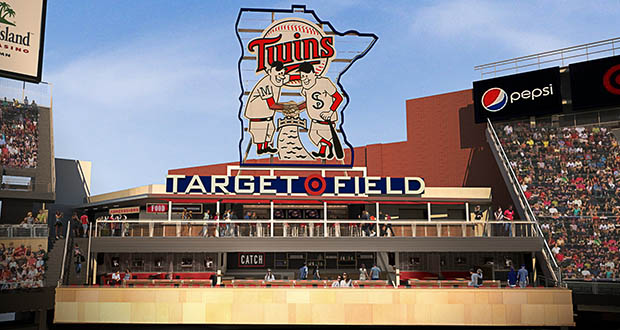
Purely Baseball Things To Know
- Target Field is the third home of the Minnesota Twins in Minneapolis and the sixth in the United States.
- The ballpark hosted the inaugural MLB game on April 12, 2010, with the Twins beating the Red Sox.
- The Twins won three Central Division titles and one Wild Card berth while playing at Target Field.
- Two weeks before the first MLB game, a special event was held at Target Field for all season ticket holders. It was a two-day event covering March 20 and 21, 2010.
- The baseball stadium saw the first game of baseball on March 27, 2010. The Louisiana Tech played the University of Minnesota attended by about 36,000 fans.
- On April 2 and 3, 2010, the home team hosted the Louis Cardinals on a preseason tour.
- The entrance through Target Plaza is the most favored entry point at the baseball park.
- The construction of Target Field began only after the Minnesota Twins signed a deal to stay in Minneapolis for 30 years.
- ESPN The Magazine named Target Field as the No. 1 ballpark among 120 sports facilities to watch a game in 2010.
- Street and Smith’s SportsBusiness Journal ranked the baseball stadium “The Best Place To Shop” in 2011.
- The ballpark was the venue for the 2014 MLB All-Star Game and the Home Run Derby.
- Target Field has many “Knotholes,” which enables fans without a ticket to watch the game from the fifth street side.
- The Twins won the AL Central Division title in the very season they moved to Target Field.
- The ballpark stadium can be expanded to allow 55,000 spectators. It has standing room for more than 2,500 fans. There are 6,000 seats covered with curtains.
- Target Field was made a neutral venue compared to hitter-friendly Metropolitan Stadium and the Metrodome. However, the ballpark helps more to pitchers than hitters.



